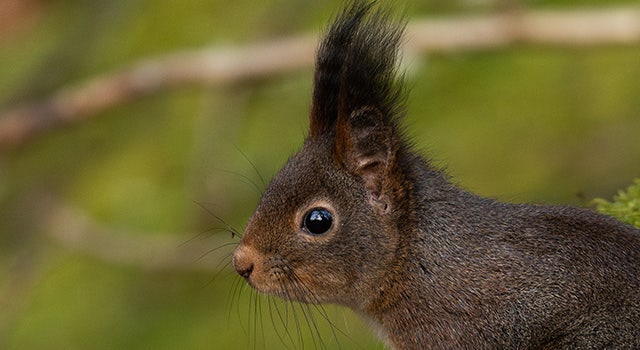Capturing the Wild Symphony with SIGMA 500mm F5.6 DG DN OS | Sports
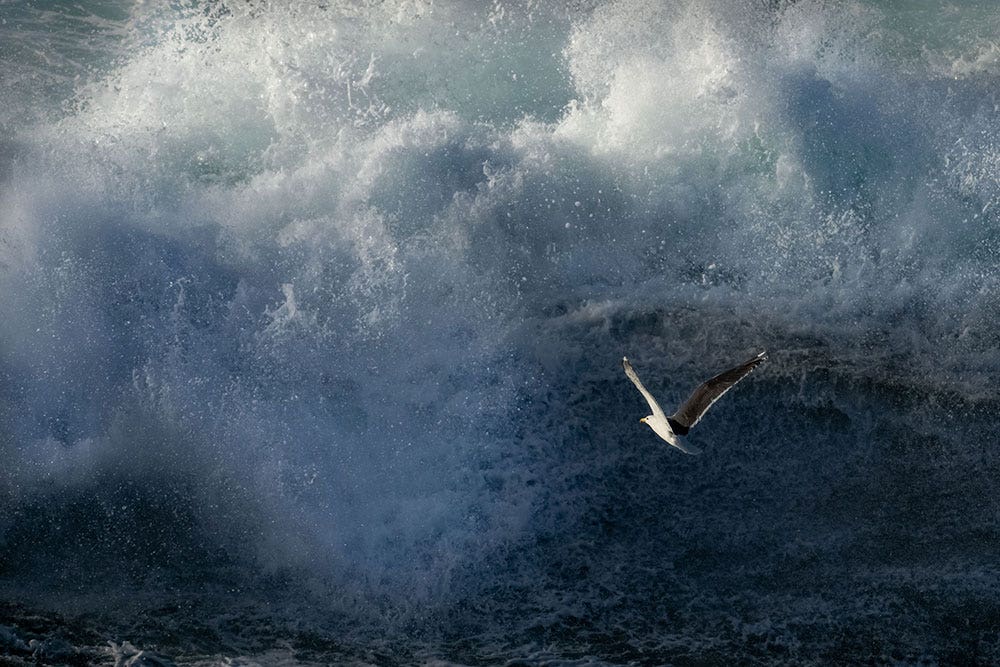

SIGMA 500mm F5.6 DG DN OS | Sports, Sony α1, ISO 4000, F11, 1/3200s
For more than ten years, I photographed the ocean, and more particularly seabirds, with numerous SIGMA lenses. My observations made me feel the fragility of these species and my mission as a photographer is to make others feel it. By photographing these birds confronted with the energy of the ocean, I tried to highlight this fusion which binds them to the sea, but also and above all their fragility. The population of seabirds is in sharp decline and various multidisciplinary studies (oceanographical, ornithological and ichthyological) have shown that their decline is linked to the general poor health of our oceans.
When I went to try the new SIGMA 500mm F5.6 DG DN OS | Sports, I wanted to continue this series and put it to the test in the tough conditions of the seaside. Its lightness and compactness surprised me at first sight and seemed perfectly suited to this endeavor.


* The images without photograph data have been created with lenses other than
SIGMA 500mm F5.6 DG DN OS | Sports
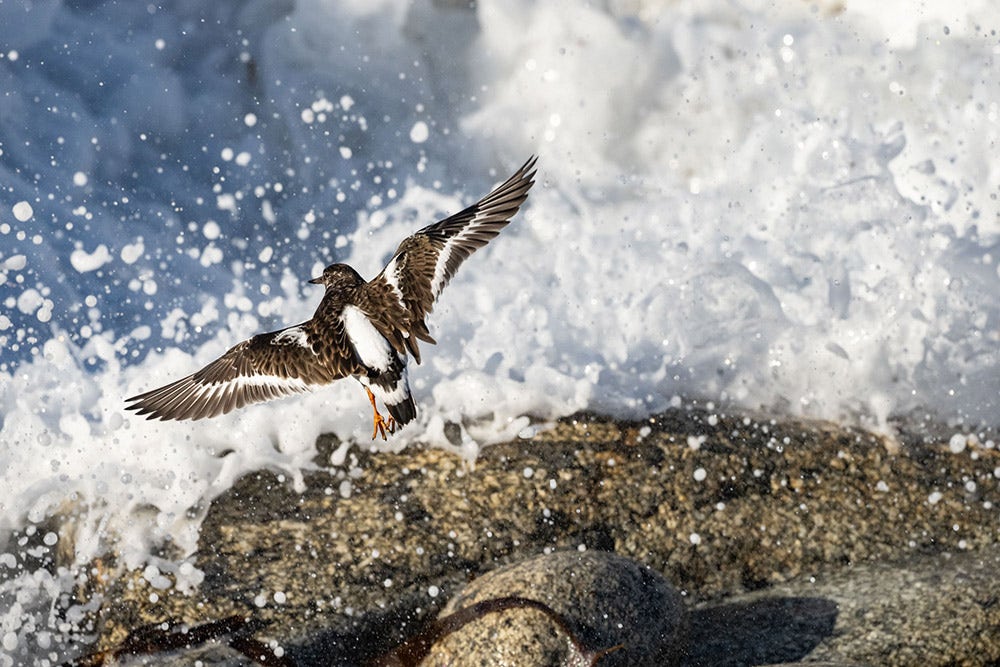

SIGMA 500mm F5.6 DG DN OS | Sports, Sony α1, ISO 3200, F11, 1/3200s
In the early morning hours, the wind was still blowing hard on the western tip of Brittany, and the waves were crashing against the cliffs. The path to a small promontory overlooking the sea was not an easy one.. If I'd been asked to imagine my bag’s contents based on the light weight, I'd never have imagined a 500mm lens!
While the light was still low, I could see the birds coming into action. The wind and swell directions determine their trajectories. This observation phase is very important, as it's when I determine where I'm going to place myself, and also when I begin to imagine the compositions. For me the phase of approaching one's subject is one of the most important moments as a wildlife photographer. From finding the subject and the location to waiting for the light, it's during all these phases, which can be very long, that inspiration is born.


SIGMA 500mm F5.6 DG DN OS | Sports, Sony α1, ISO 4000, F5.6, 1/4000s






Once on the small promontory, I see that the cormorants, which spend their flight low enough to avoid the spray, often pass close to a place where the waves explode. I see one of them approaching with the right trajectory. I grab my camera, aim, and focus on the subject very quickly —the autofocus doesn't stall as I follow the bird's tricky path. For this entire series of pictures, my goal is to give as much importance to the birds as to the sea, so I must try to have a maximum depth of field in order to also freeze the details of the explosion of the wave in the background. That's why I shot most of the images in this series with apertures around F11 or even F16. This is now possible, as the sensitivity of our camera sensors has increased considerably.
For this series of images, which I began more than ten years ago, two very ephemeral movements must come together: the flight of a bird with an uncertain trajectory and the explosion of a wave. Perseverance is essential for this type of image. Several times I have spent entire days in the storm waiting for a bird to pass by at the right moment and photographed nothing. This can be frustrating, but I think it's necessary for a photographer to push back their limits.
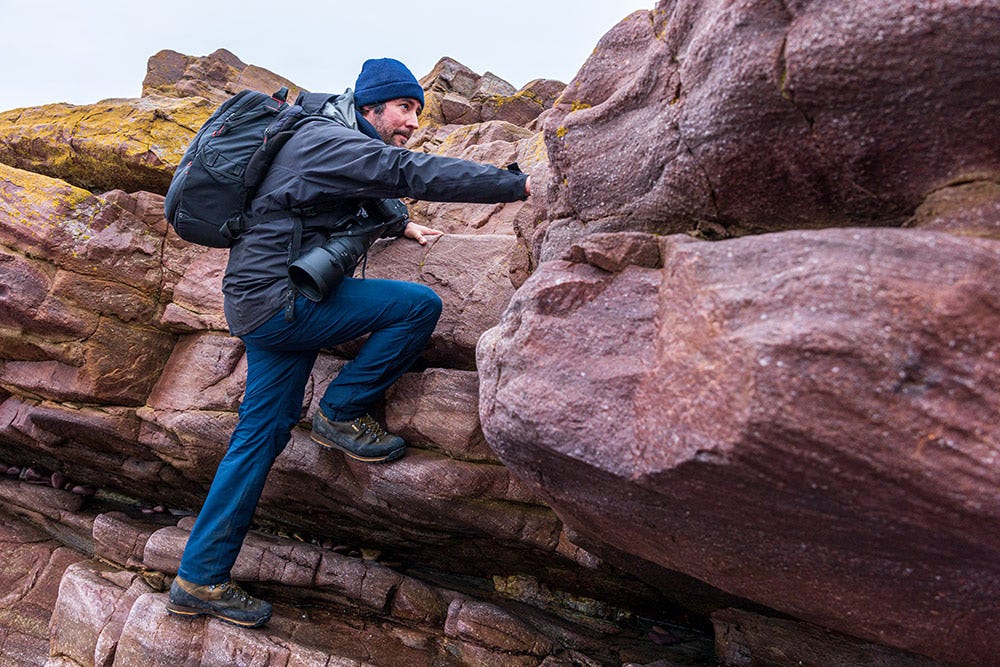



Nature offers us a great deal to discover and photograph, but if the opportunity to take an image doesn't present itself right away, we have to accept it. After a decade of using SIGMA lenses in these sometimes stormy and extreme conditions, I knew I could trust this new SIGMA 500mm F5.6 DG DN OS | Sports when a wave exploded stronger than usual and spray was thrown against the lens, and during the many rain showers that punctuated the day.
For many hours, I photographed the incessant flights of cormorants, gulls, fulmars and gannets which moved with ease through the tumultuous waves. The lightness of the lens and the precision of its autofocus allow very easy tracking of subjects, even handheld. The freedom of not being tied to a tripod made it very easy for me to move from one location to another, from one subject to another. Having light equipment during these exploratory phases, when you're moving from one place to another, sometimes in difficult terrain, is a real advantage.
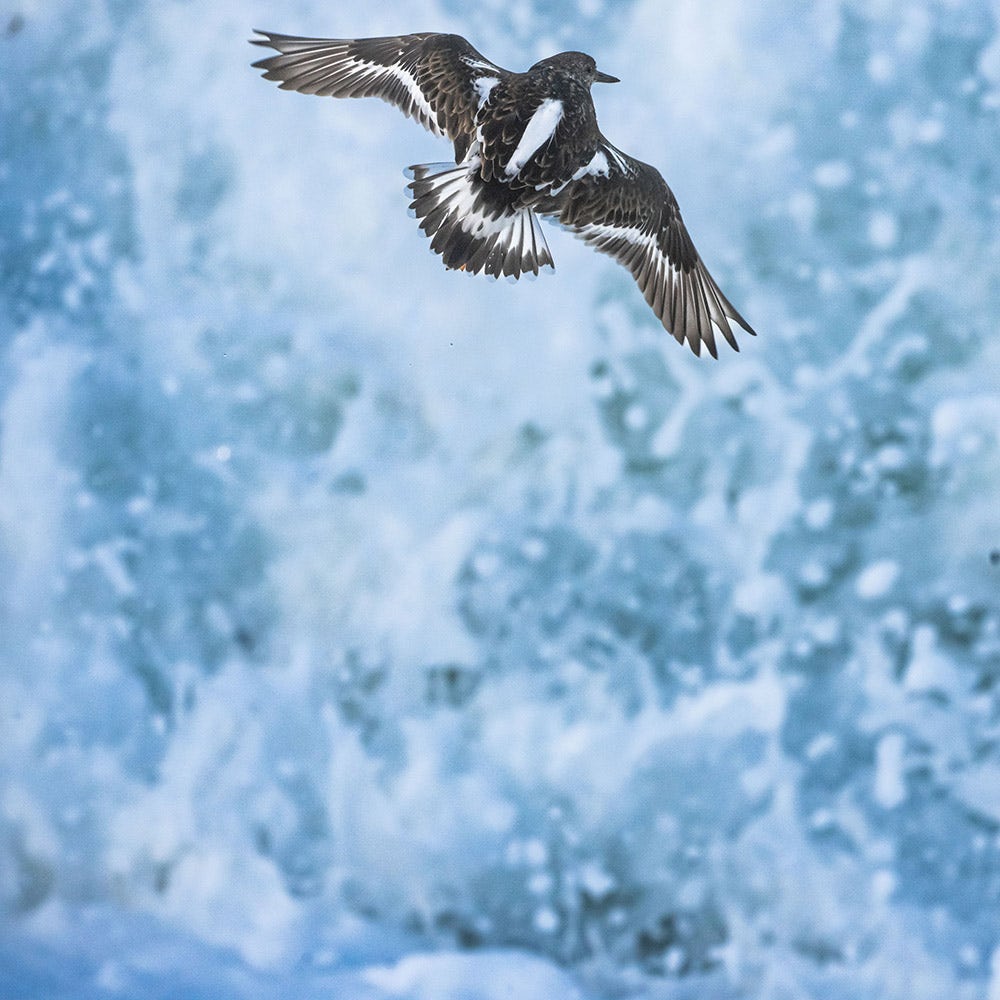

SIGMA 500mm F5.6 DG DN OS | Sports, Sony α1, ISO 3200, F11, 1/2000s


SIGMA 500mm F5.6 DG DN OS | Sports, Sony α1, ISO 4000, F11, 1/3200s
Time passes and the tide reverses. The waves then change direction and I decide to leave the point to reach a small pebble beach where the plovers like to come and play with the waves at ebb tide. I approach slowly so as not to disturb them, and keep a safe distance. I lie down on the pebbles at ground level and begin to follow their rapid movement. The lower the tide goes, the closer they get to the edge of the sea and the waves. Sometimes, they get too close and are surprised by the sudden burst of a wave. It was this moment that I had come to capture. It all happens in an instant, it's an extremely fleeting moment. The bird wanders very quickly between the pebbles, then, when the sound of the wave becomes threatening, freezes and suddenly flies away before the explosion of the wave on the rocks. It's practically impossible to anticipate in which direction the bird will fly, which makes this type of image very difficult.
I use the autofocus in tracking mode, so that the focus stays on the bird as it wanders, and is ready when the bird suddenly takes off. I then noticed that, as well as being extremely efficient, the 500mm's autofocus is also extremely quiet. This makes it a major asset for wildlife photographers.
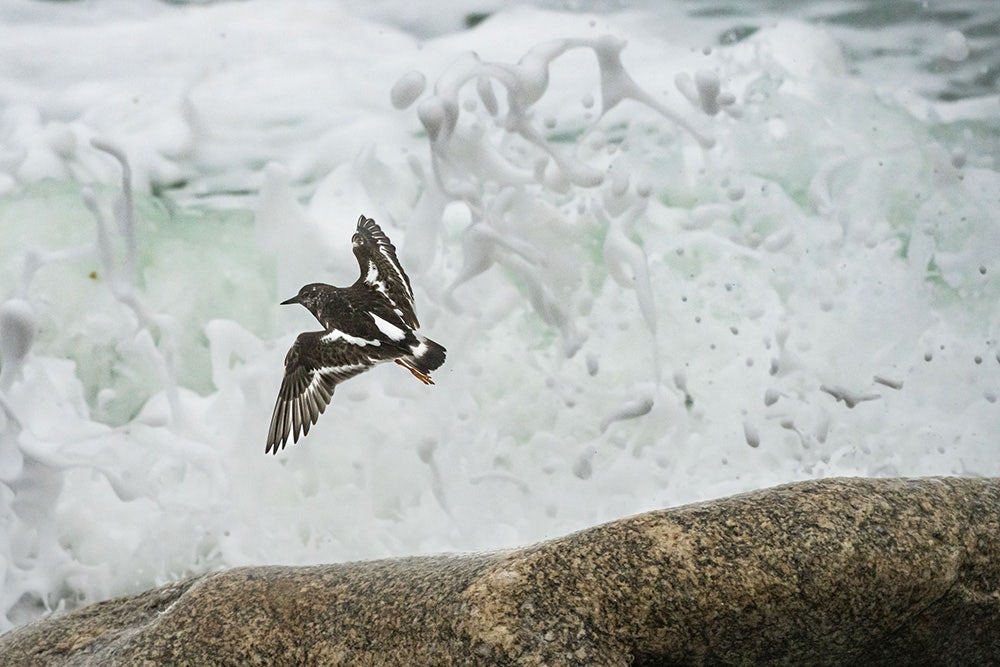

SIGMA 500mm F5.6 DG DN OS | Sports, Sony α1, ISO 5000, F11, 1/2500s


SIGMA 500mm F5.6 DG DN OS | Sports, Sony α1, ISO 6400, F11, 1/1600s


SIGMA 500mm F5.6 DG DN OS | Sports, Sony α1, ISO 5000, F11, 1/5000s


SIGMA 500mm F5.6 DG DN OS | Sports, Sony α1, ISO 5000, F11, 1/4000s
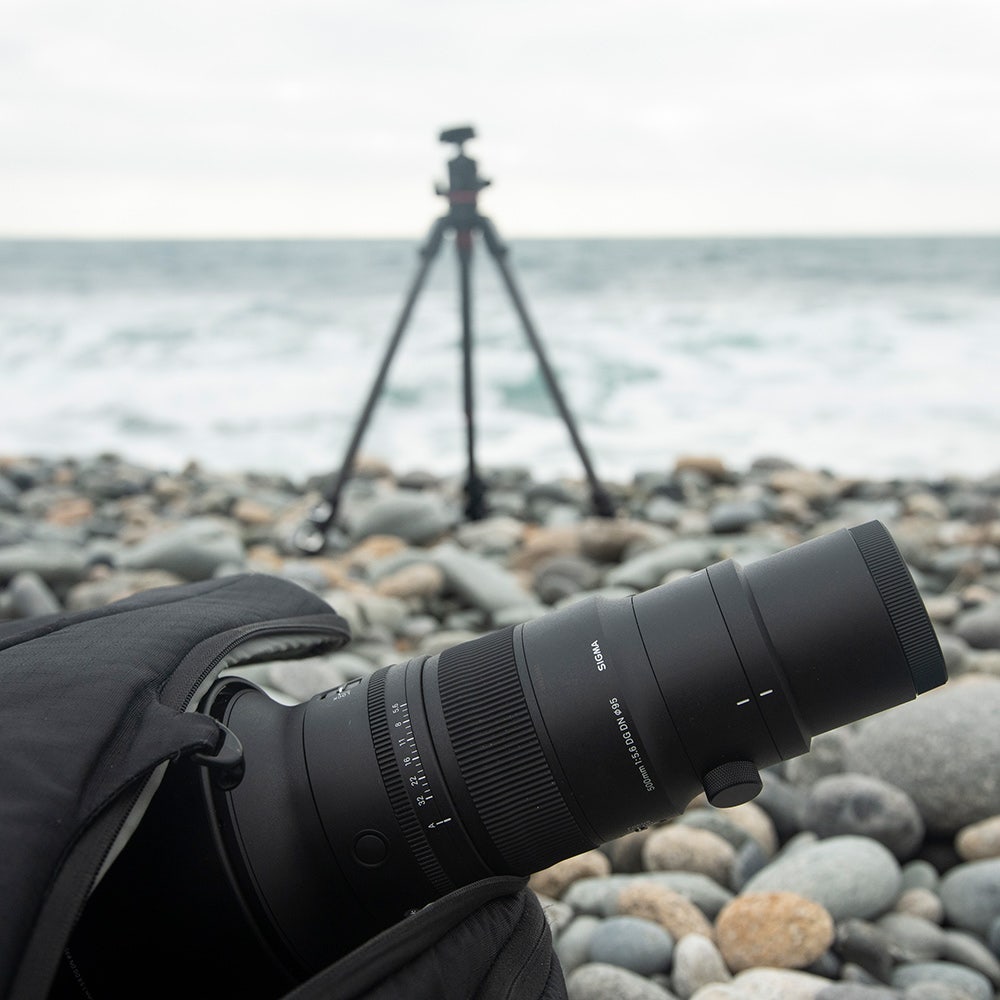

In the evening, on this winter day, the light fades quickly and I go to a larger beach where I know that an extraordinary spectacle is going to take place: the starling gathering. Tens of thousands of birds gather after sunset to spend the night in the reeds of a marsh.
Just after sunset, a few groups of birds begin to gather in the surrounding trees, and within a few minutes, they all come together on the beach before a final flight into the marshes. I take position on the beach and try to capture this particular atmosphere in which the silhouettes of a few birds stand out in great flight movements. Despite the very low light conditions, I'm surprised to see that the autofocus still holds on perfectly to these bird silhouettes. This spectacle lasts only a few minutes and the birds, in the darkness, take off for a final flight.
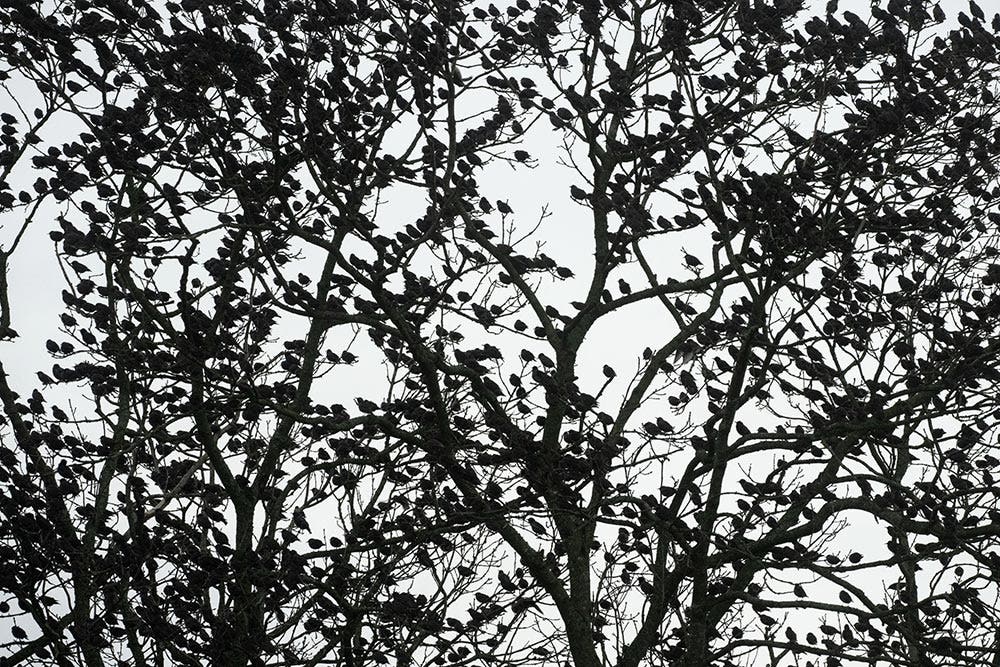

SIGMA 500mm F5.6 DG DN OS | Sports, Sony α1, ISO 3200, F11, 1/320s
After several days of photography with the SIGMA 500mm F5.6 DG DN OS | Sports, I was pleasantly surprised by several things. First, its lightness and compactness: this allows great freedom in the field and, above all, the ability to use a fixed 500mm handheld even during a full day of shooting. Second, its high image quality and very quiet autofocus, are major assets for wildlife photographers. Finally, I'd like to mention its robustness and its ability, like many other SIGMA lenses, to withstand rain and spray, which I truly put to the test.
It is a lens that inspires confidence when you're out on a wildlife reportage. It encourages us to have no limits and to be able to push back the frontiers of our inspiration.




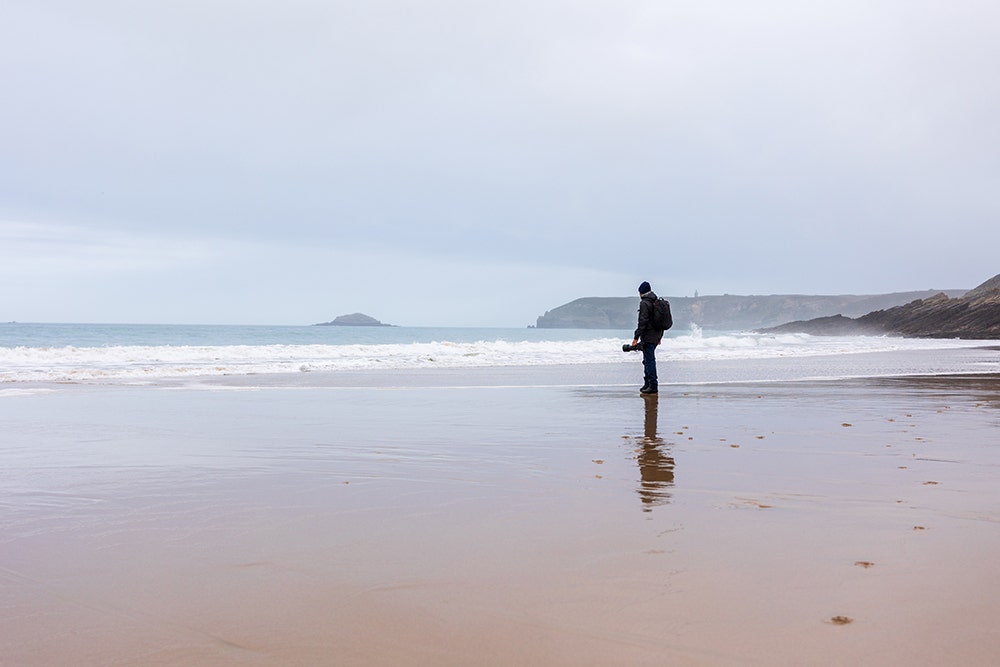

Behind the Scenes


Guillaume Bily
Wildlife Photographer
Guillaume Bily, born in 1986, is a passionate wildlife photographer. He joined the BIOS agency at eighteen and gained early recognition at the 2008 BBC Wildlife Photographer of the Year. Exhibiting extensively, he presented 'Flight' at the Festival de l'Oiseau in 2013. A solo journey in 2012 inspired "Towards the Dark," exploring twilight in Norway. In 2015, "Wild Lights" showcased his work capturing Scandinavian twilight and dawn. His "Ocean" series won the BBC Wildlife Photographer of the Year in 2016.
Passionate about the sea, Bily's work graces prestigious galleries and festivals. In 2019, he received the Landscape Award at the GDT European Wildlife Photographer of the Year.

